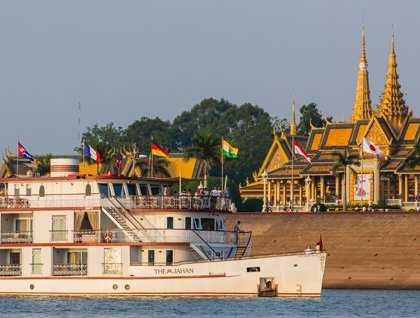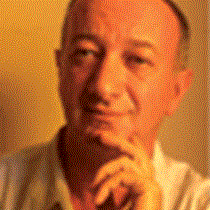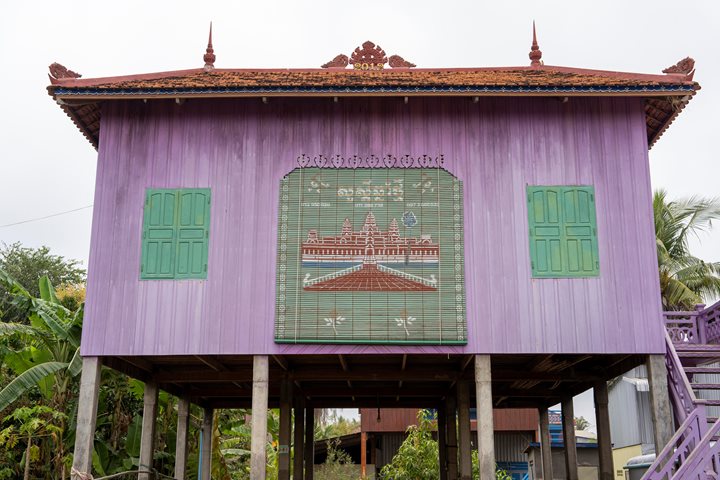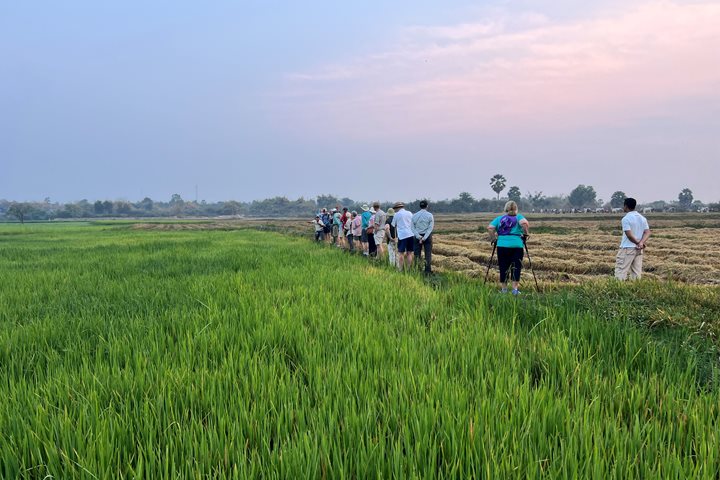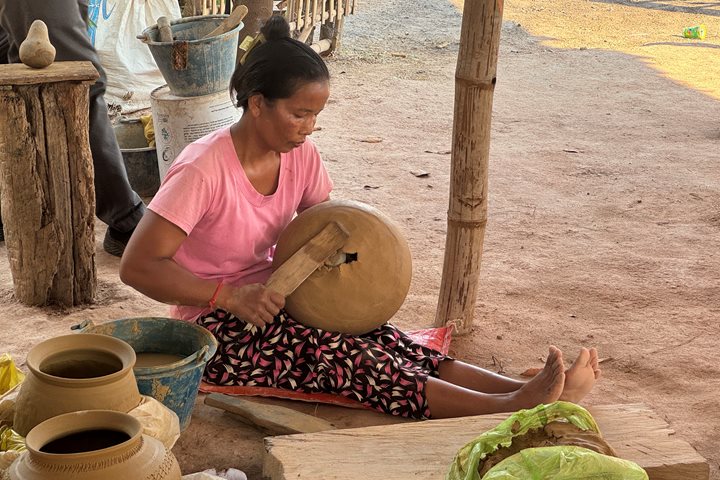Unusual would be the best adjective to qualify that day. The 3rd and, at least in theory, last day of the Khmer new year: very few foreigners would have had the strange idea to discover Phnom Penh at the time of this national celebration. In fact, it was a great advantage as we could have Phnom Penh almost for ourselves.
An early unusual beginning in Tuk Tuk instead of the traditional cyclo ride allowed us to discover peculiar aspects of Phnom Penh’s colonial past: Post Office Square, the former canal, the surroundings of Wat Phnom, the central market, and finally a stop at the Royal Palace which was fortunately opened to visitors.
The visit to the Royal Palace was followed by the national museum. Again and again, the opportunity to visit the national museum can remind us that the artistic inheritance offered by Cambodia is of considerable importance.
After the meal in the then most needed air conditioned dining room, it was time to visit the S21 (Tuo Slaeng) museum.
Once again, the visit is not a pleasant walk. On the one side, the place has to be seen because it is an essential element to understand the Khmer Rouge terror system. The visit generates uneasiness in that such awful terror contrasts violently with the general impression we have of the country: a terrible mass murdering machine in an environment of light, smiles, and sweetness.
After the visit of S21, a part of us didn’t want to go to visit the Killing Fields so we decided to organize or rather, to improvise a little visit of the less known or unusual parts of Phnom Penh.
We began with Wat Unnalom, one of the most important monasteries in Cambodia. Wat Unnalom has a curiosity within its enclosures: a 12 / 13th century tower. This fact has an extreme importance as it shows that Phnom Penh has been an important center since at least the 13th century.
An important part of the visit was the former French administration compound around Wat Phnom. As the town was almost empty at the time of our visit, we could quietly describe this remarkable town planning achievement which was completed in 8 years (1889 – 1897).
As we had to end our visit by an unusual place, we decided to go to two former Chinese quarters along the river bank, near the bridge Chroy Changvar: a fantastic vision of a school, a temple and a church transformed into accommodations.

